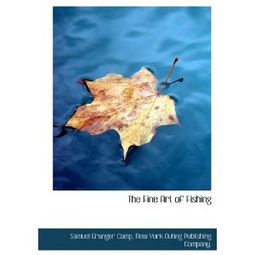How to Learn the Art of Fishing: Techniques for Hooking Fish Like a Pro
Fishing is an ancient and beloved pastime that has been enjoyed by people across the globe for centuries. Whether you're a seasoned angler or a beginner looking to cast your line into the water for the first time, mastering the art of fishing, particularly the skill of hooking fish, is essential. Here's a comprehensive guide to help you learn the techniques that will make you a more effective angler.
Understanding the Basics
Before diving into the specifics of hooking techniques, it's important to have a solid understanding of the basics of fishing. This includes knowing the different types of fishing rods, reels, lines, hooks, and bait. Each of these components plays a crucial role in your success on the water.
Choosing the Right Equipment
Rod and Reel: Select a rod and reel that are appropriate for the type of fishing you plan to do. Spinning rods and reels are great for beginners and are versatile for various types of fish, while baitcasting rods and reels are better for heavier lures and larger fish.
Line: Your line should be strong enough to handle the fish you're targeting without snapping. Monofilament, fluorocarbon, and braided lines each have their advantages, so choose the one that suits your needs.
Hooks: Hooks come in various sizes and shapes, each designed for different types of fish. Research the species you're interested in catching and choose hooks that are the right size for the bait and the fish.
Bait: Live bait, artificial lures, and even artificial scents can be used to attract fish. Understand the preferences of the fish you're targeting and use the appropriate bait.
Techniques for Hooking Fish
Choosing the Right Bait: The first step in hooking a fish is choosing the right bait. Whether you're using live bait or artificial lures, make sure it's something that the fish you're targeting would naturally eat.
Hooking Live Bait: When using live bait, it's important to hook it properly to ensure it stays alive and attractive to fish. For worms, a straight-up hook is often best. For larger bait like minnows or shad, a more pronounced hook-up is necessary to prevent the bait from sliding off.
Hooking Artificial Lures: Artificial lures come in a variety of shapes and sizes, and each requires a different technique for hooking. Generally, you want to keep the lure's action natural and enticing. For soft plastics, a Texas rig or Carolina rig are common techniques. For hardbaits, a simple hook-through-the-throat or a weedless rig might be more effective.
Hooking Techniques: Here are some common hooking techniques:
Hook Set: When a fish bites, don't immediately set the hook. Allow the fish to take the bait and feel the resistance of the hook. Then, with a quick and firm pull, set the hook.
Jigging: For certain lures, like jigs, you'll need to work them through the water column by twitching and lifting the rod tip. This can trigger a fish's strike.
Wobbling: Some lures are designed to wobble when retrieved, which can attract the attention of fish. Keep the retrieve smooth and consistent.
Hooking Safety: Always be aware of the direction of the hook when setting it. A sharp hook can cause injury, so be careful and consider wearing gloves if necessary.

Practice Makes Perfect
Like any skill, fishing takes practice. Spend time on the water, experimenting with different techniques and baits. The more you fish, the better you'll understand what works and what doesn't. Here are some tips for practicing:
- Start in calm conditions to get a feel for your equipment and techniques.
- Begin with simple setups and gradually add complexity as you become more comfortable.
- Fish with other anglers to learn from their techniques and tips.
Advanced Techniques
Once you've mastered the basics, you can explore more advanced techniques to improve your hooking success:
- Trolling: Trolling involves dragging a lure or bait behind a moving boat. It's an effective way to cover a lot of water and can be particularly successful for certain species.
- Fishing Structures: Targeting fish that are holding around structures like rocks, logs, or reefs can be more challenging but can lead to bigger catches.
- Understanding Fish Behavior: Observing fish behavior can help you predict their movements and increase your chances of hooking them.
Conclusion
Learning how to hook fish effectively is a key aspect of becoming a skilled angler. By understanding the basics, choosing the right equipment, mastering various hooking techniques, and practicing regularly, you'll be well on your way to catching more fish. Remember, fishing is not just about the technique but also about the experience and the connection with nature. Enjoy the journey and the thrill of the catch.












